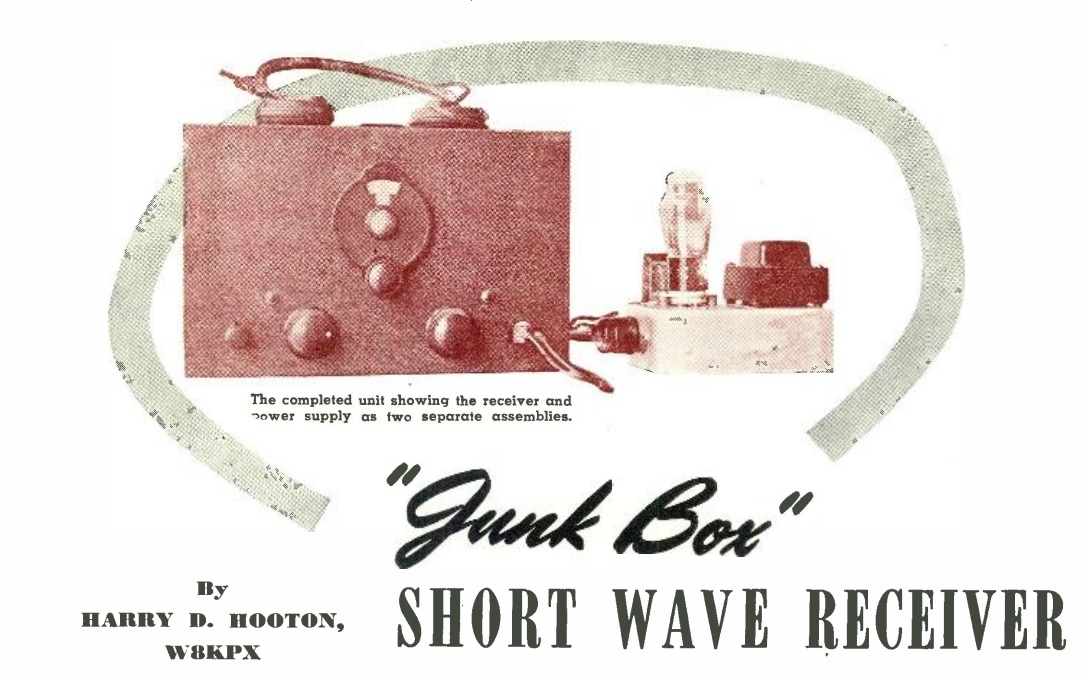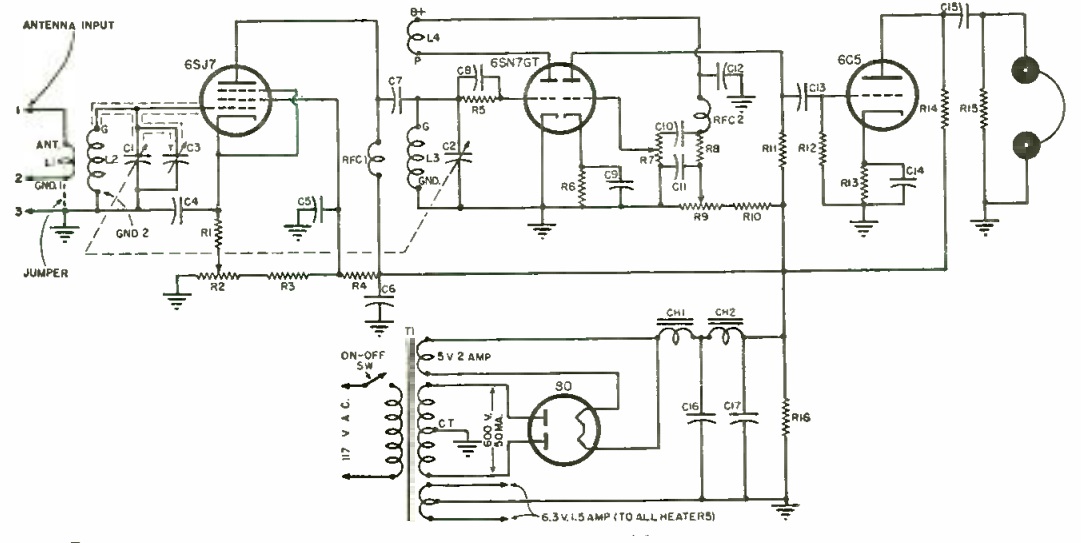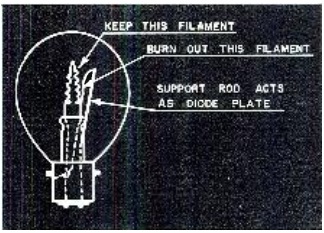 We previously featured the idea shown at left, using a dual-filament light bulb as a diode tube. The idea is to burn out one of the filaments, and use that as the plate. The other filament becomes a directly heated cathode. This is from the January 1943 issue of Radio News, which also included other ideas for emergency crystal sets. This one called for a 6-volt type 1158 lamp, which is still available on Amazon
We previously featured the idea shown at left, using a dual-filament light bulb as a diode tube. The idea is to burn out one of the filaments, and use that as the plate. The other filament becomes a directly heated cathode. This is from the January 1943 issue of Radio News, which also included other ideas for emergency crystal sets. This one called for a 6-volt type 1158 lamp, which is still available on Amazon , although the same idea could be used with a 12 volt type 1157, which is available at at Amazon
, although the same idea could be used with a 12 volt type 1157, which is available at at Amazon or WalMart.
or WalMart.
 The same idea appeared a hundred years ago this month in the September 1920 issue of Popular Science. This one was to use the bulb as a rectifier and not detector, but the idea is the same. The idea was sent to the magazine by one R.U. Clark, 3d:
The same idea appeared a hundred years ago this month in the September 1920 issue of Popular Science. This one was to use the bulb as a rectifier and not detector, but the idea is the same. The idea was sent to the magazine by one R.U. Clark, 3d:
The bulbs used as rectifiers are the bayonet-base type, round automobile headlights of the double-filament type, just recently put on the market for the Ford automobile. One filament should be burned out by an over-voltage current applied to the proper terminals. The connecting wire and all that remains of this filament can then be used as the plate, and the remaining filament, which consumes only .85 amperes, can be used to supply the electron stream.
The usual alternating current can be fed to the filament and plates of these bulbs when suitably reduced by transformers, and direct current taken out in the manner usual with such devices.
These tubes will pass about 0.5 amperes each under suitable conditions.
The author notes than many want to experiment with vacuum tubes as rectifiers, but don’t want to run the risk of damaging expensive tubes. The Ford light bulbs, on the other hand, sold for only 65 cents, making such experiments more forgiving. The illustration here shows to bulbs, presumably mounted as a full-wave rectifier.
Making a homemade vacuum tube in this manner would make a very interesting science fair project. To demonstrate, an old “wall wart” transformer could be used as the input. Most have a DC output, but some have a low voltage AC output. Examine the ones available at the closest thrift store, and chances are, a suitable one can be found. By using an inexpensive multitester that measures both AC and DC voltage, it can be shown that the input is AC and the output is DC.
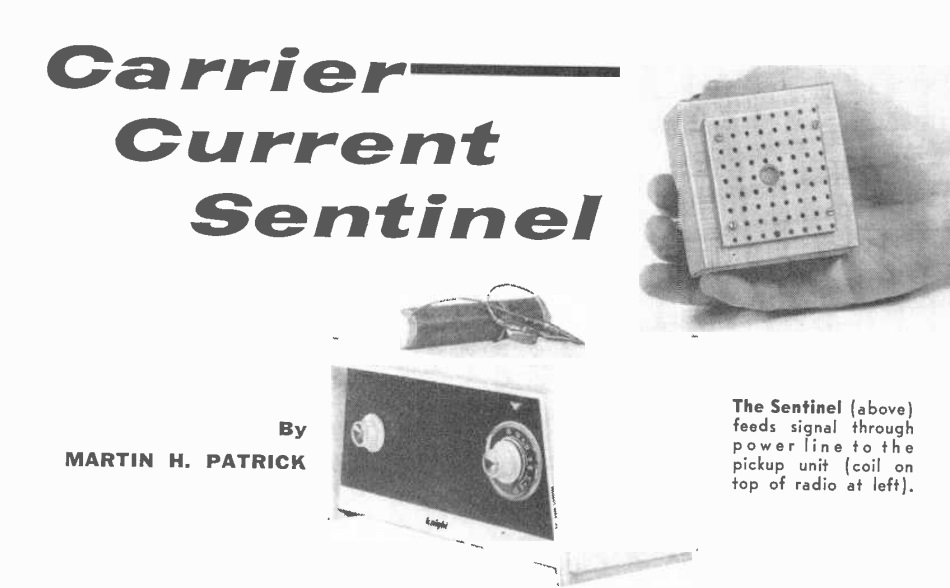 Sixty years ago this month, the September 1960 issue of Popular Electronics showed how to put together this one-way carrier current intercom. It could be used to listen to the nursery, garage, or other room, anywhere in the house. The transmitter was a simple one-transistor oscillator, using a speaker as the microphone. It sent the signal through the house wiring to another room, where a pickup coil was plugged in and placed near a radio set to a clear spot at the bottom of the dial. Despite the low power, this hookup allowed the signal to be monitored anywhere in the house.
Sixty years ago this month, the September 1960 issue of Popular Electronics showed how to put together this one-way carrier current intercom. It could be used to listen to the nursery, garage, or other room, anywhere in the house. The transmitter was a simple one-transistor oscillator, using a speaker as the microphone. It sent the signal through the house wiring to another room, where a pickup coil was plugged in and placed near a radio set to a clear spot at the bottom of the dial. Despite the low power, this hookup allowed the signal to be monitored anywhere in the house.

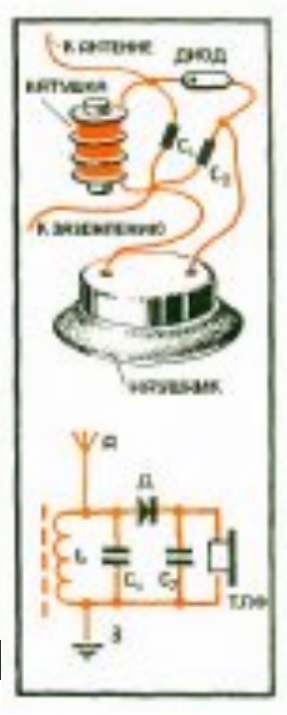
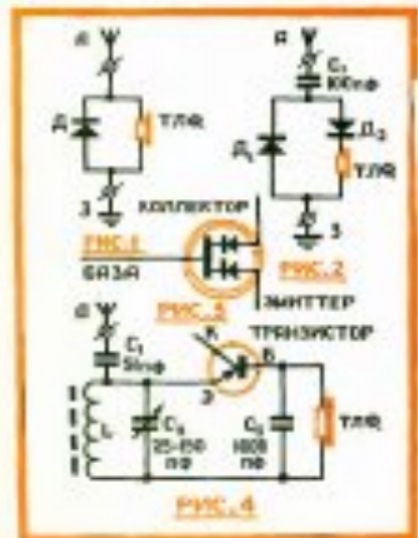
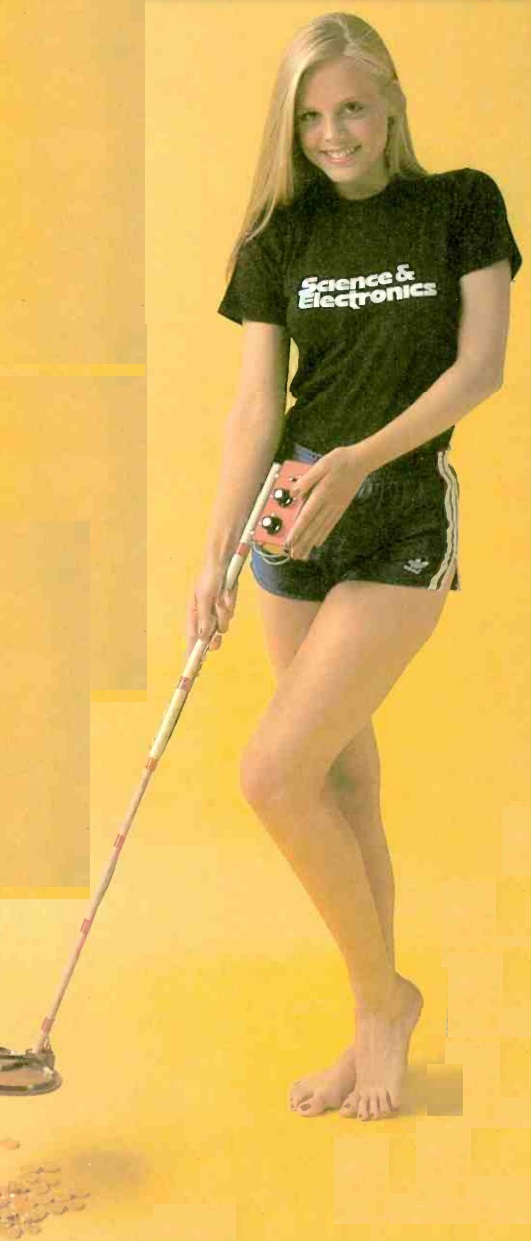
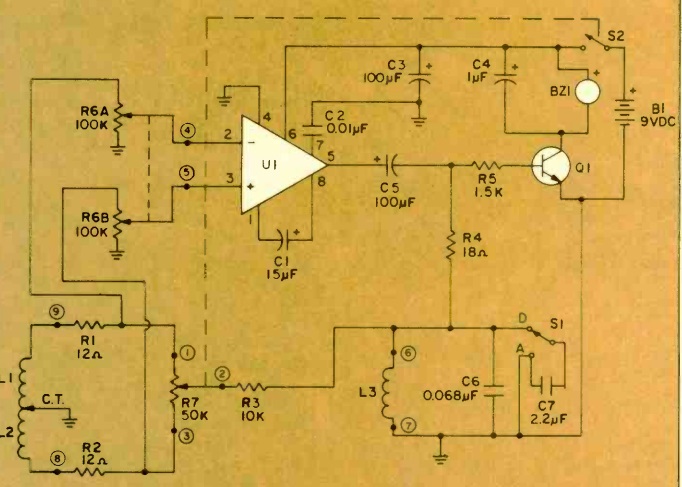
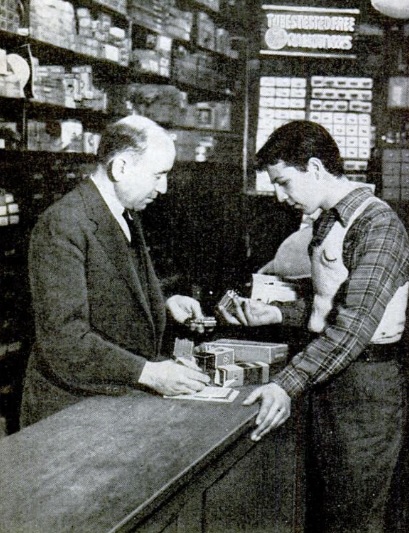
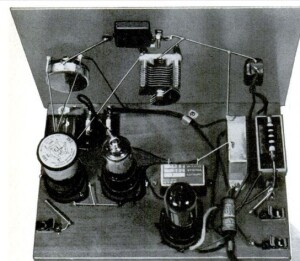
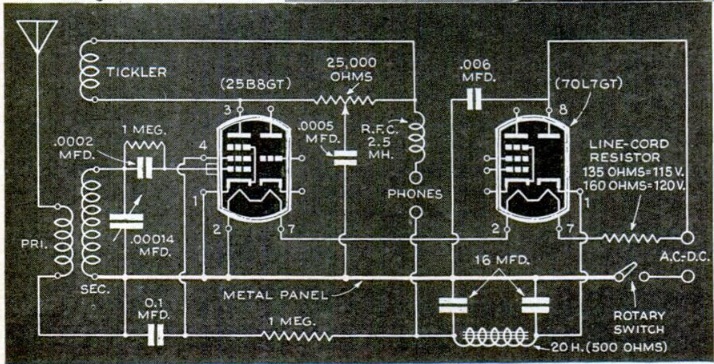

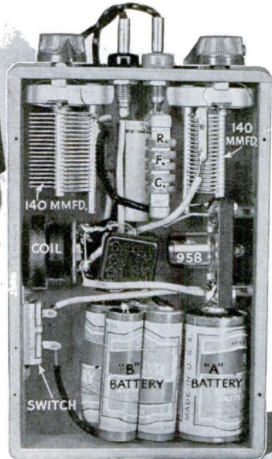
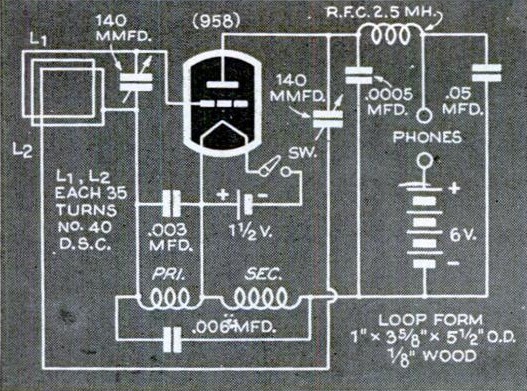
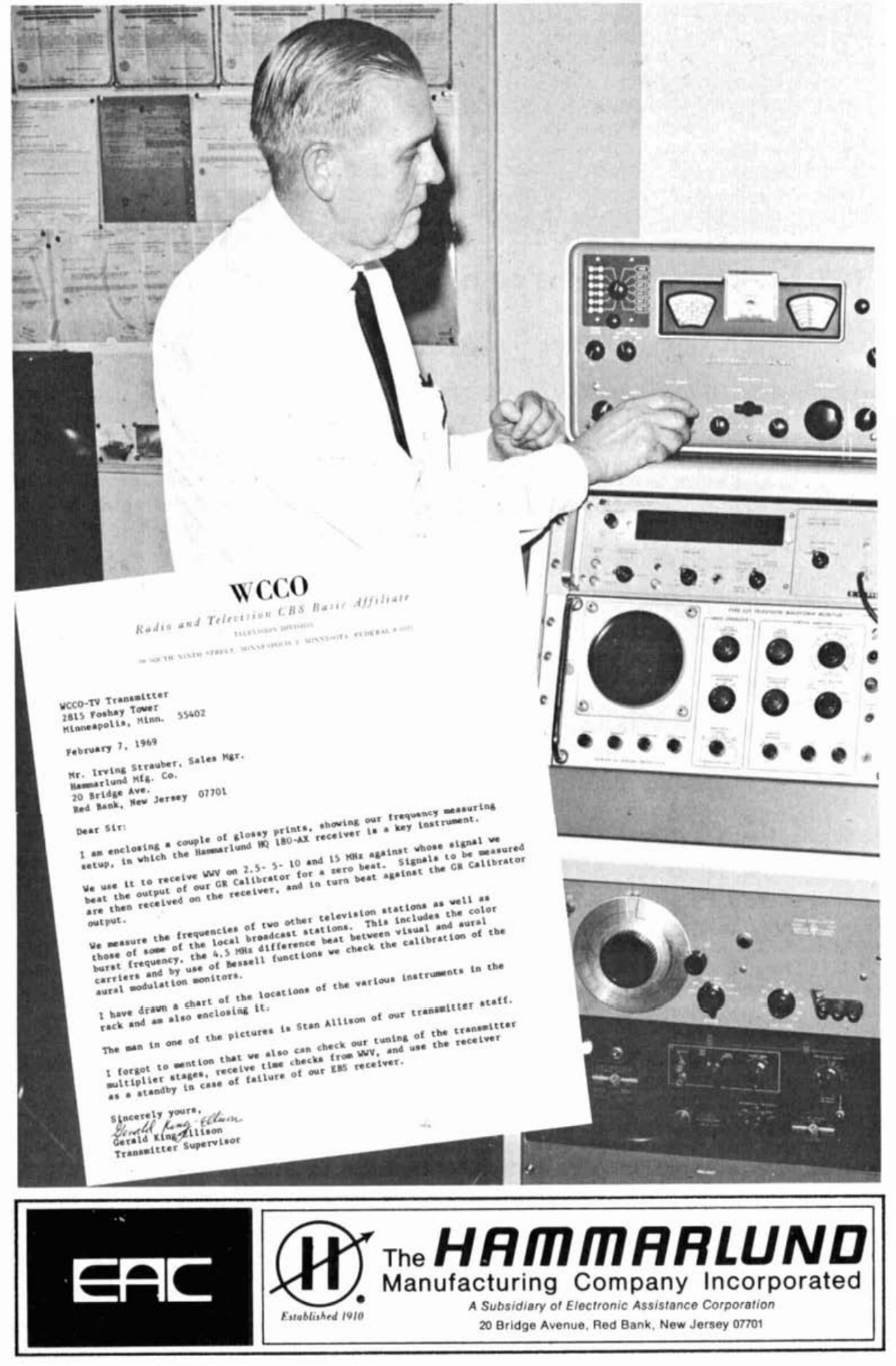
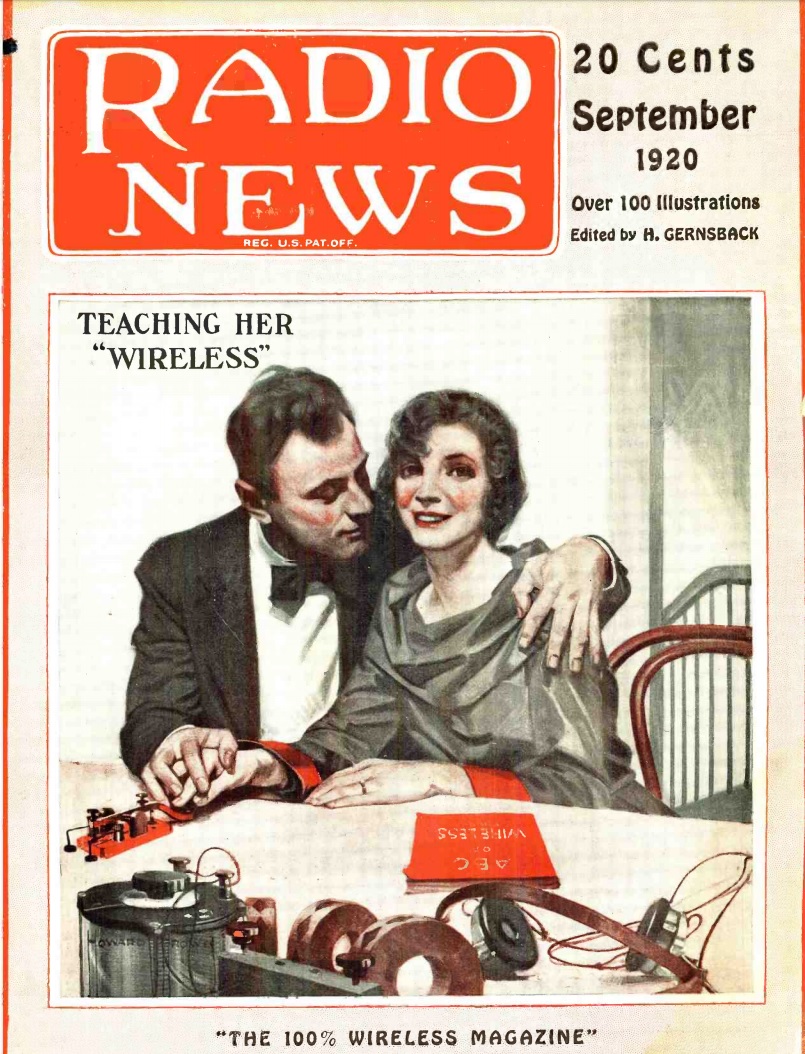

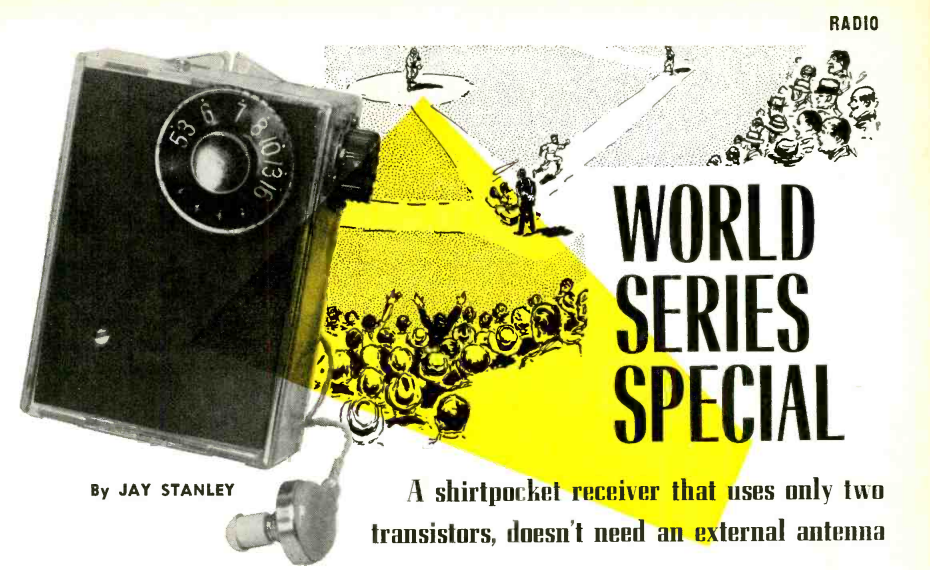
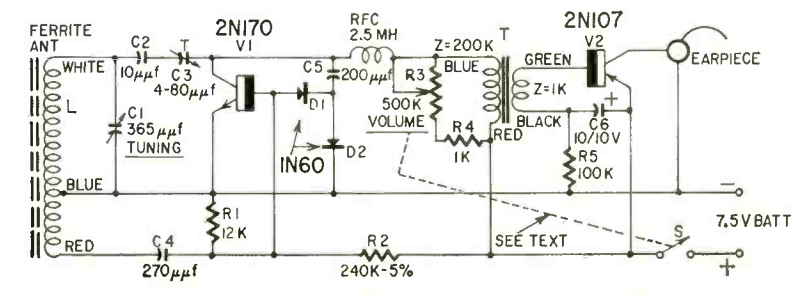
 We
We 
